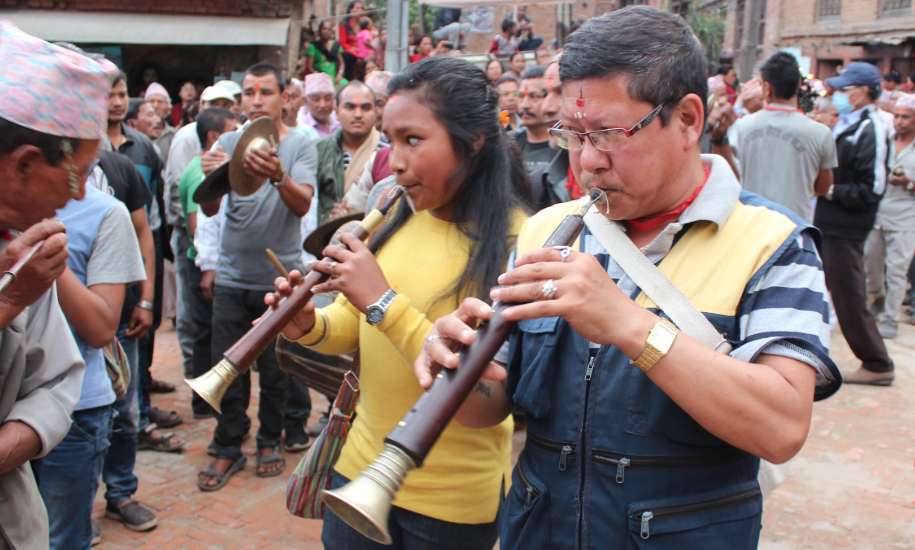Traditional, Folk, Fusion, and conFusion: Music and Change in the Newar Communities of Nepal
(PhD Dissertation Abstract)
This dissertation explores the musical changes in the Newar communities from the 1920s to 2018. For centuries, the indigenous people from Kathmandu, the Newars have been practicing predominantly Hindu and Buddhist culture, inviting comparison with India before the Mughal invasion of the sixteenth century. Since Nepal was never invaded by the Mughals, the scholars argue that the Newars and their music offer us a glimpse into an archaic South Asian culture. The Newar musical culture, which is often contemplated as untouched tradition that has been in practice for centuries, these days is undergoing a lot of rapid changes in content and the context mainly as a result of media, migration, and modernization. In a relatively short period of time, there has been a huge increase in women participation in traditional music, the caste barrier has been heavily relaxed and some traditional musicians have paved a way for commercialization.
On the one hand, traditional and folk music has been revitalized in many communities through newly formed gender and caste inclusive music groups. On the other hand, the music has been recontextualized and repositioned by changing repertoire, playing styles, modifying instruments and fusing with various other musical instruments, styles, and genres. This study focuses on these changes and analyzes these from the viewpoints of the ecology of music culture, modernism, and Newar musical identity.
In this study, I examine the historical narrative, current position and overall health of traditional Newar music in a global perspective of the ecology of music cultures. This study shows that the presumably static Newar music tradition is changing as musical performances are separated from their ritual context in various ways and degrees, a change that I characterize as a shift from practice to performance. The study also examines the relationship between “traditional” ritual music and “modern” styles that incorporate pop and world music. I review socio-political influences, motivations of musical changes and argue the appearance of fusion music as “indigenous modernity” or “alternative modernity”. I demonstrate new musical groups have brought significant changes in Newar music tradition in terms of gender and caste inclusiveness as well as financial sustainability. I also demonstrate that the new groups have developed a strong sense of ethnic identity. This study contributes to the ethnographic literature on musical tradition and changes with special attention to gender, modernity, and discourses on ethnic and national identity.
Traditional, Folk, Fusion, and conFusion

